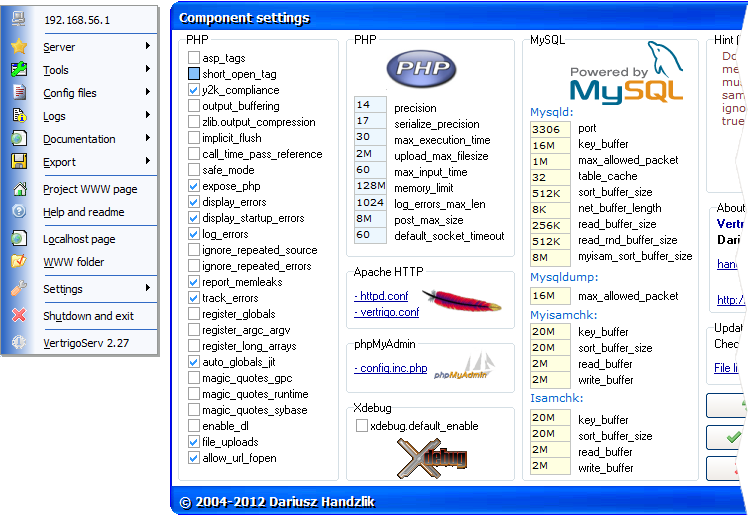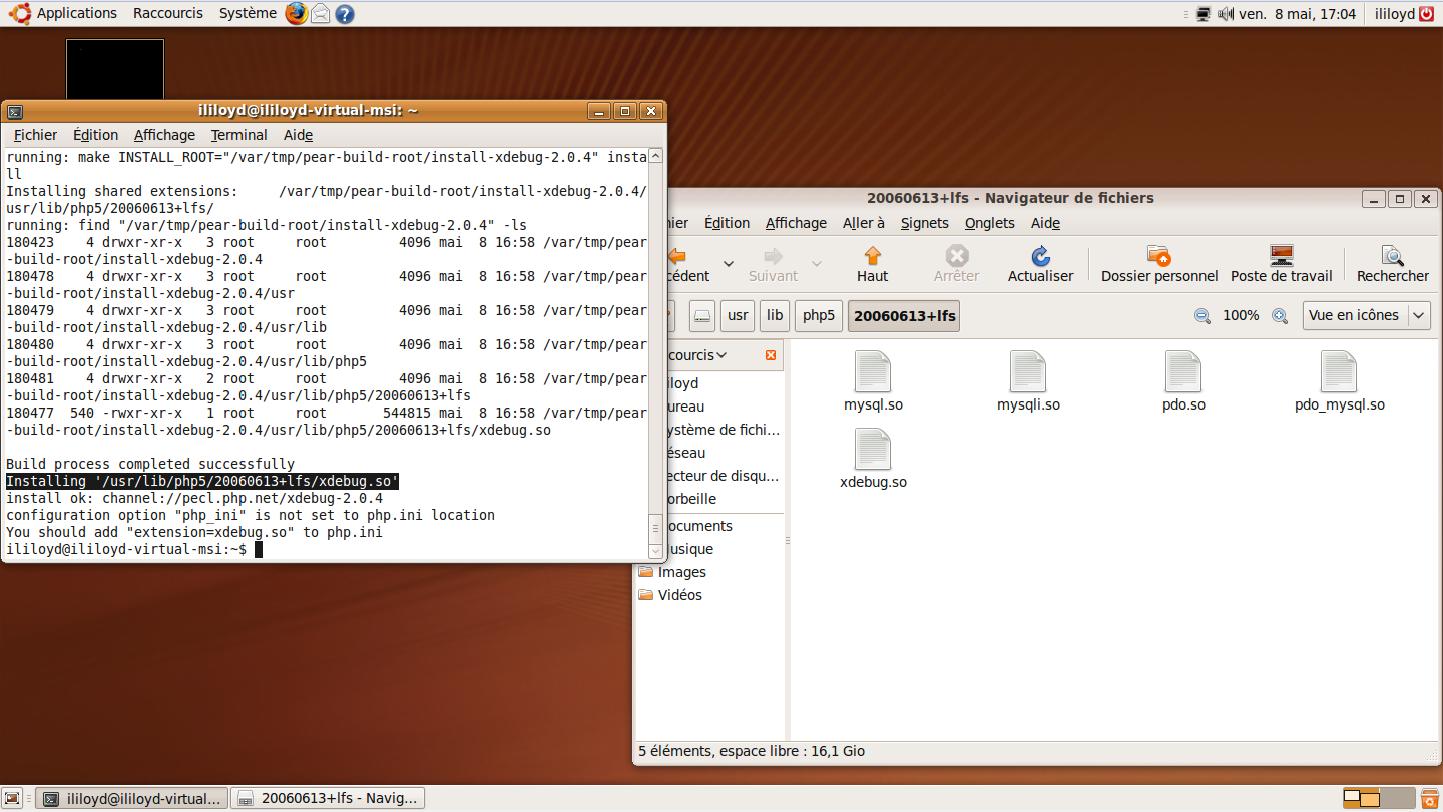- Here's the download link: WampServer Extension for PHP 5.2.11. Share follow answered Mar 24 '15 at 15:45. Choudhury Saadmaan Mahmid Choudhury Saadmaan Mahmid. 1,227 2 2 gold badges 24 24 silver badges 51 51 bronze badges. Add a comment 0.
- The way PHP and Apache interact in the default WAMPServer install is that Apache launches the PHP Interpereter as a dll (php5apachexy.dll) as this is a very close relationship i.e. Not communication via a TCP port like PHP and MySQL, so they both have to have been compiled using the same version of Microsoft Visual C Compiler.
- Prerequisites- Installation of Wampserver -Before proceeding with the installation of Wampserver, you must ensure that certain elements are installed on your system, otherwise Wampserver will absolutely not run, and in addition, the installation will be faulty and you need to remove Wampserver before installing the elements that were missing.
One of the great things about WAMP is that it allows you to easily switch between different versions of PHP. All you need to do is properly install the different versions of PHP for your machine. Here is how it’s done.
 I recently upgraded to Windows 10 and took the opportunity to record a screencast on changing my PHP version in WAMP. The screencast, based on WAMP 2.5, is meant to
I recently upgraded to Windows 10 and took the opportunity to record a screencast on changing my PHP version in WAMP. The screencast, based on WAMP 2.5, is meant to You should put your code into php file make helloworld.php file and put in wamp www folder and run with wamp server. For hello world program in php just follow this tutorial but before that you should have wamp server or xamp server on your pc(wamp/xmap are open source software's and easily can found on google) your 1st php program code:-php echo 'hello world';? output. Updates only 'Wampmanager', does not add any Apache PHP, MySQL or MariaDB versions. It is a cumulative update. It is not necessary to apply the old updates 3.0.1 to 3.2.3 before applying 3.2.3. There will be no changes to your Apache, PHP, MySQL, MariaDB settings and versions used; your local sites and databases will not be affected.
compliment the steps below that are based on WAMP 2.2. I recommend that you read through the steps, watch the screencast, then come back to steps as you upgrade PHP on your version of WAMP.
the steps below that are based on WAMP 2.2. I recommend that you read through the steps, watch the screencast, then come back to steps as you upgrade PHP on your version of WAMP.Download the zip file for the version of PHP for Windows that you wish to install.
Make sure that you download the correct Thread Safe version — either VC9 or VC11.
The VC9 builds require you to have the Visual C++ Redistributable for Visual Studio 2008 SP1 x86 or x64 installed. The VC11 builds require to have the Visual C++ Redistributable for Visual Studio 2012 x86 or x64 installed.
Create a new folder in
[path-to-wamp]/bin/php/php.#.#.#where [path-to-wamp] is the location that WAMP is installed on your machine and #.#.# corresponds to the version that you are installing, ie:c:/wamp/bin/php/php5.4.29Extract the all files from your download to the new PHP directory you created in the previous step. That list of files should look similar to the ones captured in the screenshot below.
Copy the following files from your old PHP directory to your new PHP directory.
php.iniphpForApache.iniwampserver.conf
These files contain your PHP, Apache and WAMP configurations.
Open the
php.iniandphpForApache.inifiles in your new PHP directory that you copied in the previous step. Search for any references to your old PHP version and replace them with the new PHP version. You will for sure need to update theextension_dirpath. Depending on what PHP extensions you have installed, you may need to update others as well.Start WAMP (if it’s not already started) and take note of all the active PHP settings and extensions that you are currently running. You will need this information in a future step.
Open your
php.inifile in WAMP and create a backup of this file.Exit WAMP entirely and restart it.
Once WAMP has restarted, select the option to Stop All Services.
With all services stopped, select the version of PHP that you wish to run from the PHP Version menu in WAMP.
Verify that all PHP settings and extensions are enabled from step 6. Note, there may be a few differences in the available settings and extensions in your new version of PHP.
Open up the
php.inifile in WAMP and add all required PHP configuration settings that are present in thephp.inibackup file that you created in step 7. The easiest way to identify missing configuration settings is to run a diff between your backupphp.inifile from step 6 and your newphp.inifile using a tool like DiffNow.While everyone’s PHP configuration is slightly different, below are a few required configuration settings that must be updated.
Specify the PHP error log directory:
error_log =Specify the PHP extensions directory:
extension_dir =Specify the PHP upload directory and max upload file size:
upload_tmp_dir =andupload_max_filesize =Specify the PHP timezone:
date.timezone =Specify your PHP session path:
session.save_path =
Update any custom configuration settings from your
php.inibackup file created in step 7 – again by running a diff. I work alot in Magento and explained in another post some of my PHP configuration for importing large databases in WAMP. Below are those values.Lastly, Restart All Services in WAMP for your new PHP configuration to take effect. …And give yourself a pat on the back, PHP in WAMP has been successfully upgraded!

Wamp Php 5.2

Php Wamp Server Download
As Jordan points out in the comments below, you’ll want to update PHP’s location in your Windows Path Variable (links to a post I wrote) following a PHP upgrade.